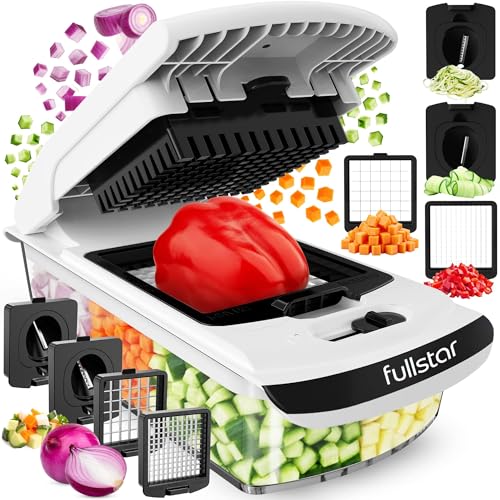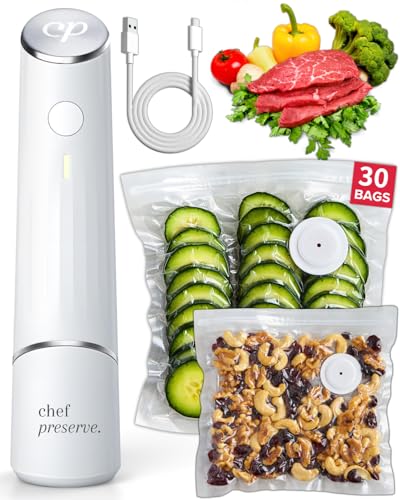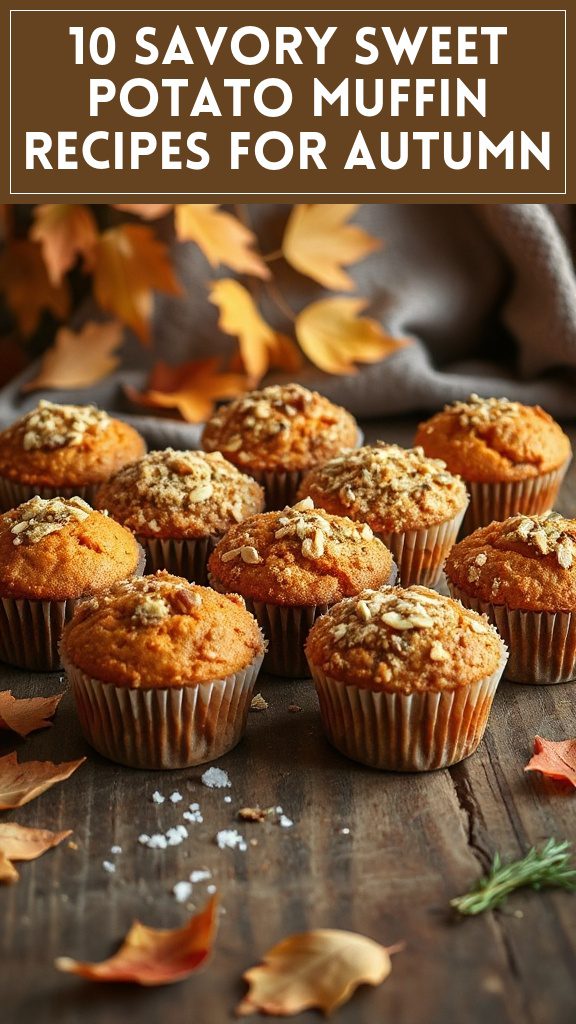Origins of Rosemary Bread
The origins of rosemary bread can be traced back to ancient Mediterranean cultures, where the aromatic herb was revered not only for its culinary uses but also for its symbolic significance.
Historically, rosemary was associated with remembrance and fidelity, often included in rituals and celebrations. The bread, infused with its fragrant oil, became a vessel for communal sharing during significant festive occasions.
As various cultures embraced its versatility, rosemary bread evolved, embodying local traditions and techniques. The blend of its robust flavor with wholesome ingredients made it a cherished staple, reflecting the essence of Mediterranean life.
Thus, the historical uses of rosemary bread transcend mere sustenance, entwining it deeply with heritage and collective memory in these ancient societies.
- The Original Pro Chopper - Our superstar veggie slicer has been creating waves on TikTok! Simple to use,...
- Easy Meal Prep with Rust-Resistant Blades - Our vegetable chopper is perfect for anyone who wants to eat...
- 5-Star Design - The soft-grip TPU handle ensures controlled chopping, while the non-skid rubber base...
Bakers Seeking Unique Flavors
As culinary traditions evolve, bakers are increasingly drawn to innovative flavors that captivate the palate and inspire new creations.
Flavor experimentation has become a vibrant aspect of contemporary baking, where artisans explore diverse ingredients beyond the conventional. Infusing breads with unexpected elements like herbal infusions or exotic spices tantalizes taste buds, inviting curiosity in every bite.
Unique ingredients, such as infused oils and ancient grains, are becoming staples in artisanal recipes. This creative journey allows bakers to reinterpret classic bread forms, marrying tradition with modern culinary trends. The result is an array of aromatic flavors that not only satisfy but also reflect the baker’s individuality.
As a result, the bread-making landscape is rich with imaginative possibilities, encouraging both bakers and customers to embrace the extraordinary.
- Makes Everything Simple : Just forget your bagged cheese! Only turn the handle for several times and get...
- Premium Material : All parts of the rotary cheese grater are made of food grade ABS material, no BPA. The...
- Three Option Grater : The parmesan cheese grater finishes food preparation with slicing, shredding and...
Essential Ingredients

Aromatic Easter bread comes to life through a harmonious blend of essential ingredients that reflect both tradition and creativity. The star of this culinary masterpiece is fresh rosemary, cherished not only for its fragrant essence but also for its health benefits, which include antioxidant properties and digestive support.
Complementing the rosemary is a selection of high-quality olive oil varieties, each imparting their own distinctive flavor and richness to the dough. Extra virgin olive oil, renowned for its robust taste and nutritional advantages, adds a delightful complexity while ensuring a crispy crust.
Together, these ingredients create a delectable balance, elevating this bread from a simple recipe to a cherished festive tradition, embodying a celebration of both flavor and heritage.
- 💰 REDUCE WASTE AND SAVE MONEY: Chef Preserve keeps FOOD FRESH 5 TIMES LONGER than non-vacuum storage...
- ✅ POWERFUL, QUICK & EASY TO USE: Simply press the button to start. The device vacuum seals a bag in 5...
- ♻️ REUSABLE & RESEALABLE BAGS: Chef Preserve comes with dishwasher, freezer, refrigerator, and...
Cooking Steps
Begin by preheating the oven to a warm 350°F, preparing to transform simple ingredients into a sublime Easter bread.
As the oven warms, the baker begins to mix the flour, rosemary, and olive oil, coaxing together flavors that embody the holiday’s cultural significance.
The dough becomes a tactile experience, kneaded until elastic and smooth, reflecting the care put into this cherished tradition.
Once shaped, the loaves are placed on a baking sheet, where their visual presentation will shine.
With a final sprinkle of sea salt, they await the oven’s embrace.
During baking, the aroma envelops the kitchen, drawing everyone in, ensuring that this aromatic bread not only nourishes but also becomes a centerpiece for the Easter celebration.
- Generous Capacity: 7-quart slow cooker that comfortably serves 9+ people or fits a 7-pound roast
- Cooking Flexibility: High or low slow cooking settings, with convenient warm function for ideal serving...
- Convenient: Set it and forget it feature enables you to cook while at work or performing daily tasks
1. Activate Yeast Mixture

To awaken the yeast, warm water is introduced, creating a nurturing environment for the dormant organisms.
At this carefully monitored yeast temperature, the water gently encourages the yeast granules to dissolve and come to life.
A sprinkle of sugar acts as sustenance, fueling their vigor and speeding up yeast activation.
As the mixture begins to bubble and froth, it signals that the yeast is thriving, ready to infuse the bread with its distinctive aroma and texture.
This essential step ensures a robust leavening process, vital for achieving the desired rise in the dough.
Observing the yeast’s transformation from dormant to active is a fascinating process that highlights the magic of baking, marrying science and art seamlessly.
- 100% Leak-proof: Guaranteed no-spill seal and secure latches
- Crystal-clear Tritan Built: Stain-resistant and odor-resistant material for a clear view of contents
- Lightweight & Sturdy: Easy to carry, yet durable for everyday use
2. Knead Dough for Five Minutes

With gentle determination, the dough comes alive under the hands of the baker. Each push and fold employs specific kneading techniques, blending the ingredients into a cohesive mass.
As the baker works, the dough texture transforms from sticky and ragged to smooth and elastic, indicating the gluten development essential for a superior bread. The rhythmic motion releases air pockets, enhancing the dough’s ability to rise.
Time feels suspended as five minutes pass, filled with the comforting smell of olive oil mingling with rosemary. The baker knows that this crucial step lays the foundation for a tender crumb and crispy crust, ensuring the aromatic Easter bread will delight the senses long before it hits the oven.
- 𝗘𝗳𝗳𝗼𝗿𝘁𝗹𝗲𝘀𝘀 𝗪𝗲𝗶𝗴𝗵𝗶𝗻𝗴: Supports 5 units...
- 𝗣𝗿𝗲𝗰𝗶𝘀𝗲 𝗥𝗲𝘀𝘂𝗹𝘁𝘀: Accurately weighs up to 11 lb/5 kg with 1 g...
- 𝗦𝗶𝗺𝗽𝗹𝗲 & 𝗖𝗼𝗺𝗽𝗮𝗰𝘁: The small and sleek scale is a perfect fit for...
3. Shape Dough Into Loaf

The baker gently shapes the elastic dough into a smooth, cohesive loaf, visualizing the final product that will soon emerge from the oven.
Using essential dough shaping techniques, they press and fold the dough, creating tension on the surface while ensuring the interior remains airy. The hands expertly pinch the ends, skillfully tucking them under to form a rounded shape.
Loaf forming tips emphasize the importance of a tight surface to achieve a striking, crisp crust. Once satisfied with the shape, the baker places the loaf seam-side down in a prepared pan, confident in the anticipation of what the oven will bestow.
Each movement is deliberate, a dance of precision that transforms simple ingredients into a delectable creation.
- Instant Read Food Thermometer | Our instant read thermometer features a temperature probe and advanced,...
- Multi-Use | From bbq thermometer to baking thermometer, our digital food thermometer for cooking is...
- Easy-Read Digital Thermometer For Cooking | Large instant thermometer dial with bright blue backlight...
4. Let Dough Rise, Covered

Once the dough has been shaped into a loaf and placed seam-side down in the pan, the next important step unfolds: allowing it to rise.
This critical phase allows the yeast to work its magic, with the dough temperature ideally maintained at around 75 to 80°F for optimal fermentation.
A covered loaf creates a warm, moist environment, preventing the surface from drying out while promoting even rising.
During the rising time, typically lasting one to two hours, the dough will expand, becoming light and airy.
Observing the dough’s transformation is a delightful experience, as it begins to fill the pan, signaling the approach of a beautifully baked bread.
Patience during this moment is essential for achieving the perfect texture and flavor.
- Versatile 54-Piece Collection: Elevate your kitchen with the Home Hero 54-Piece Kitchen Utensil Set, a...
- Durable and Long-Lasting: Crafted from premium stainless steel, these kitchen utensils are designed to...
- Perfect Holiday Gift: Delight your loved ones with this kitchen utensils gift set this festive season....
5. Preheat Oven to 375°F

Heat permeates the kitchen as the oven is set to 375°F, a vital step in the bread-making process. This specific oven temperature is crucial for achieving the desired texture and flavor in the aromatic Easter rosemary olive oil bread.
As the oven preheats, warmth radiates, creating an inviting atmosphere that signals the start of bread baking. The anticipation builds, as the dough, having risen to perfection, awaits this transformation.
At 375°F, the heat ensures a crispy, golden crust envelops the soft, herbal-infused interior of the bread. This preheating process not only activates the yeast but also establishes an ideal baking environment, allowing the aromatic elements to meld beautifully, promising a delightful culinary experience with every bite.
- 24-ounce insulated stainless-steel water bottle with a FreeSip spout and push-button lid with lock
- Patented FreeSip spout designed for either sipping upright through the built-in straw or tilting back to...
- Protective push-to-open lid keeps spout clean; convenient carry loop doubles as a lock
6. Brush With Olive Oil

As the dough rests, a gentle brush with olive oil brings forth a glossy sheen, enhancing both the visual appeal and the flavor profile of the aromatic Easter bread. This technique not only contributes to a delectable, crispy crust but also offers numerous olive oil benefits, such as adding a rich, fruity aroma and depth to the bread.
Employing effective brushing techniques—using a clean, soft brush or even fingertips—ensures an even distribution of oil, preventing sogginess and promoting a delightful crunch. The interaction of heat and oil during baking creates a beautiful golden hue, signaling the bread’s readiness.
This simple step transforms the loaf into a rustic centerpiece perfect for festive gatherings, inviting everyone to partake in its unique flavors.
7. Serve With Fresh Herbs

Complementing the aromatic Easter bread with fresh herbs elevates its flavor profile and adds a touch of vibrancy to the dish.
Sprinkling a medley of fresh herb combinations, such as thyme, basil, and chives, enhances the bread’s rustic character and enriches each bite with herby freshness. These bright fibers contrast beautifully with the olive oil’s richness, inviting delight.
For optimal flavor, it is essential to store herbs properly; they thrive when kept in a cool, moist environment, preferably in a glass of water or wrapped in a damp paper towel within the refrigerator.
This not only prolongs their life but also maintains their aromatic essence, ensuring that every herb garnishing the Easter bread is vibrant and full of flavor.
Serving and Pairing Suggestions

A generous slice of aromatic Easter bread can serve as a delightful centerpiece for any festive table. Its rich, herby aroma complements an array of dishes and beverages, making it a versatile choice for gatherings.
When considering ideal accompaniments, one might include:
- Olive Tapenade: The salty, savory spread enhances the bread’s flavors beautifully.
- Chèvre or Goat Cheese: Its creaminess balances the bread’s crispy crust, creating a harmonious blend.
- A Spinach Salad with Citrus Dressing: The refreshing zing of the dressing offsets the bread’s richness perfectly.
For wine pairings, a crisp Sauvignon Blanc or a light-bodied red, such as Pinot Noir, would elevate the entire experience, making the meal unforgettable.
Tips and Variations

Exploring tips and variations for aromatic Easter bread can enhance its appeal and adaptability for various occasions. By incorporating diverse ingredient combinations, bakers can create delightful twists on this classic recipe.
1. Herb Combinations: Experiment with various herbs like thyme, basil, or oregano to add depth to the dough.
These fresh aromas will create a unique experience with every bite.
2. Flavor Enhancements: Incorporate sun-dried tomatoes or roasted garlic for an umami-rich twist.
These additions can elevate the flavor profile, making the bread a standout on any table.
3. Sweet Variations: For a sweet rendition, mix in dried fruits or a touch of honey, resulting in a perfect balance between sweetness and savory flavors, ideal for any celebration.
Kitchen Tools
Creating aromatic Easter bread requires the right kitchen tools to ensure a successful baking experience. Essential baking tools enhance the process, bringing both joy and efficiency to the kitchen. High-quality kitchen gadgets can make a world of difference, providing precision and ease in crafting that perfect loaf.
| Essential Kitchen Gadgets | Benefits |
|---|---|
| Digital Scale | Accurate ingredient measurement, avoiding guesswork. |
| Stand Mixer | Effortless mixing and kneading for perfect dough. |
| Dough Scraper | Smoothly transitioning dough without mess. |
| Flower Pot (for proofing) | Mimics a warm environment, aiding fermentation. |
These tools not only make the baking process seamless but also infuse heart and soul into the creation, transforming simple ingredients into a delightful aromatic Easter bread.
Essential Equipment
Building on the foundation laid by the right kitchen tools, the importance of suitable equipment cannot be overstated when preparing aromatic Easter bread.
The success of this recipe hinges on essential baking tools that facilitate proper bread making techniques. A sturdy stand mixer becomes indispensable for achieving a smooth, elastic dough, while a precision scale ensures accurate ingredient measurements, crucial for consistency.
Lastly, a quality baking stone is vital for creating a crispy crust that encases the tender, flavorful interior.
- Stand mixer – for effortless dough kneading.
- Precision scale – to measure ingredients accurately.
- Baking stone – to enhance crust texture.
Equipped with these tools, bakers can truly elevate their Easter bread experience.
Nutritional Information (Estimated, per serving)
While savoring a slice of aromatic Easter bread, one may find themselves intrigued by the delightful balance of flavors and textures, but understanding its nutritional profile is equally important. This bread not only provides enjoyment but also offers notable nutritional benefits, especially when considering ingredient substitutions to enhance healthfulness.
| Nutrient | Amount per Serving | Alternative Options |
|---|---|---|
| Calories | 150 | Use whole wheat flour |
| Protein | 4g | Add seeds or nuts |
| Fiber | 2g | Incorporate ground oats |
| Fats | 6g | Replace olive oil with avocado oil |
Herb-Infused Bread Suggestions

Aromatic herbs can elevate the humble Easter bread into a fragrant centerpiece for any spring gathering.
By infusing bread with natural flavors, one can create distinctive offerings that delight the senses. Here are three enticing herb-infused bread suggestions:
- Basil Garlic Rolls: Infuse freshly minced garlic and chopped basil into a soft dough, resulting in warm, buttery rolls that carry a robust aroma and flavor.
- Rosemary Olive Oil Bread: Incorporate aromatic rosemary and high-quality olive oil into the dough, yielding a crusty bread that is both savory and satisfying.
- Thyme Focaccia: Top a classic focaccia with fresh thyme leaves and a drizzle of olive oil, allowing the fragrant herb to permeate the bread, creating a delightful texture and taste with each bite.
Troubleshooting
Many bakers encounter challenges when crafting aromatic Easter bread, leading to moments of frustration that can dampen the festive spirit. One common hurdle is yeast activation issues; if the liquid used is too hot or too cold, the yeast may fail to bloom, resulting in dense, unrisen dough.
It is essential to check the expiration date of the yeast and ensure the right temperature for activation, typically around 110°F. Furthermore, dough consistency concerns can arise, with some bakers producing overly sticky or dry mixtures.
This can often be remedied by adjusting the flour or liquid quantity, allowing the dough to reach a soft, elastic state. Meticulous attention to these details can significantly enhance the baking experience and outcome.
Conclusion
Crafting aromatic Easter bread serves as an expression of tradition and creativity, transforming moments of challenge into opportunities for growth in the kitchen.
The cultural significance of this festive bread resonates deeply within various communities, infusing each home with warmth and togetherness.
Bread traditions symbolize the essence of Easter, reflecting the joy of renewal and abundance. The meticulous process of kneading, shaping, and baking fosters a connection to generations past, instilling a sense of pride in every loaf produced.
With its fragrant rosemary and the alluring crispy crust, this bread becomes more than nourishment; it embodies love and heritage, inviting families to gather, share stories, and celebrate.
















